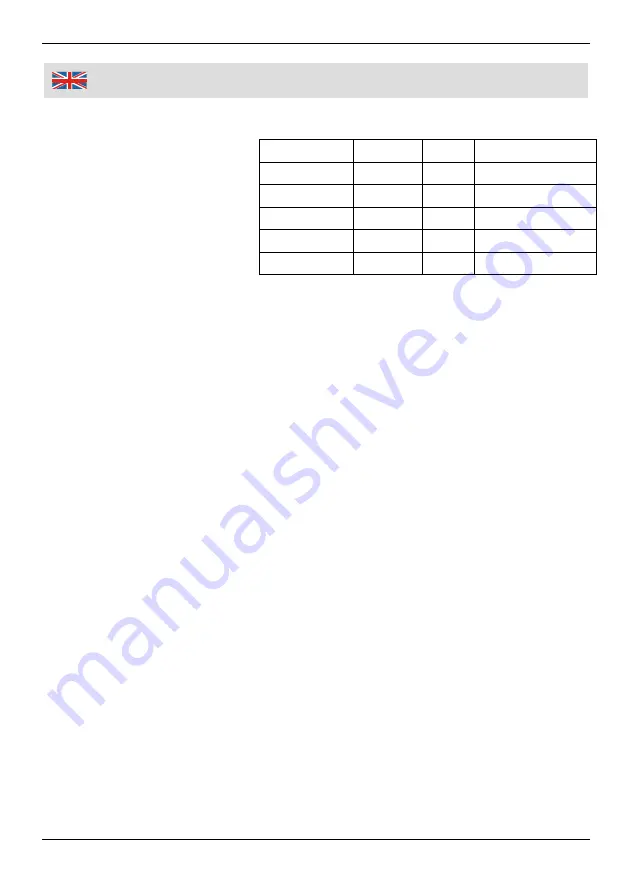
13
Operating
Intended Use
The air hydraulic riveter is
intended for installing blind
rivets into materials and
dimensions, specified in
the table. Do not use the
riveter to beat and bump
the blind rivets into the
material.
The intended use also
includes an operation following the operating instructions.
Any use beyond these parameters (different media, applying force) or any
changes (reconstruction, no original accessory) can lead to serious risks and
is regarded as use that is contrary to the intended purpose.
Before first Use
Unpack the air hydraulic riveter and check all parts for any damage in transit.
Dispose of packaging materials or store them out of reach of children. Plastic
bags etc. may become a deadly toy for children.
Start-up
1. The air hydraulic riveter is equipped with an R ¼“ air inlet. For your own safety
it is not recommended to use a permanent connection between the air
hydraulic riveter and the air hose, but use the supplied quick coupling adaptor
(7) instead.
2. Seal the end of the quick coupling adaptor with Teflon tape before you screw it
onto the air connection of the air hydraulic riveter.
3. The hydraulic riveter has to be provided with lubricating oil during operation.
Before each use add oil through the air inlet or use an oil-fog lubricator. Also
read the chapter “Lubrication”.
4. Use a flexible hose to connect the air hydraulic riveter to the compressor. Set
up a pressure of approx. 6.3 bars on the compressor. Check all air connections
for leakages. Then switch off the compressor.
5. To ensure proper operation of the riveter and perfect riveted joints, it is
important to have the correct nosepiece and the corresponding blind rivets to
be set. The diameter of the rivet must correspond to the fitted nosepiece.
Aluminium Copper Steel Stainless Steel
2.4 2.4
2.4
2.4
3.0 3.0
3.0
3.0
3.2 3.2
3.2
3.2
4.0 4.0
4.0
4.0
5.0 5.0
5.0










































